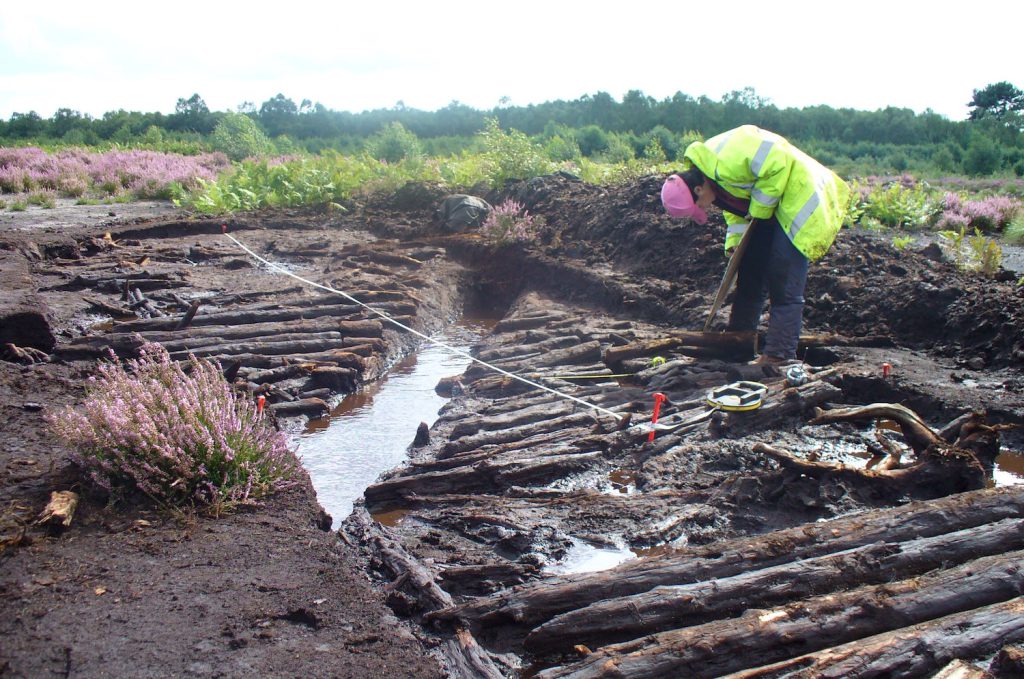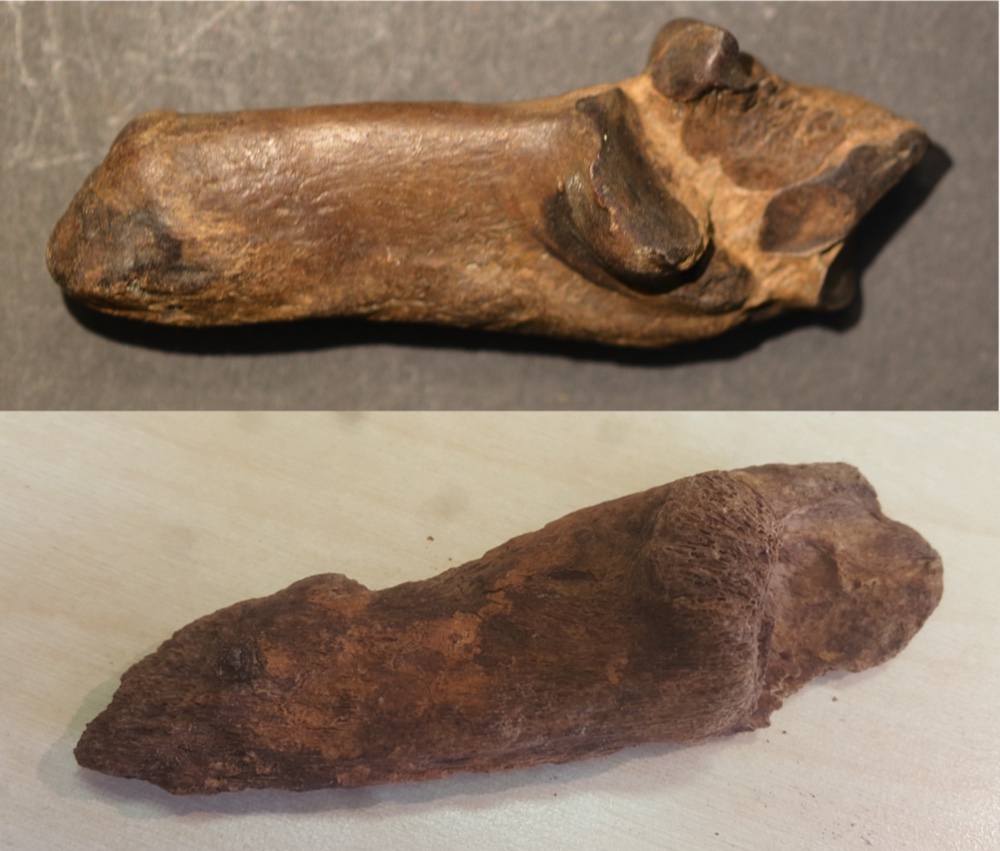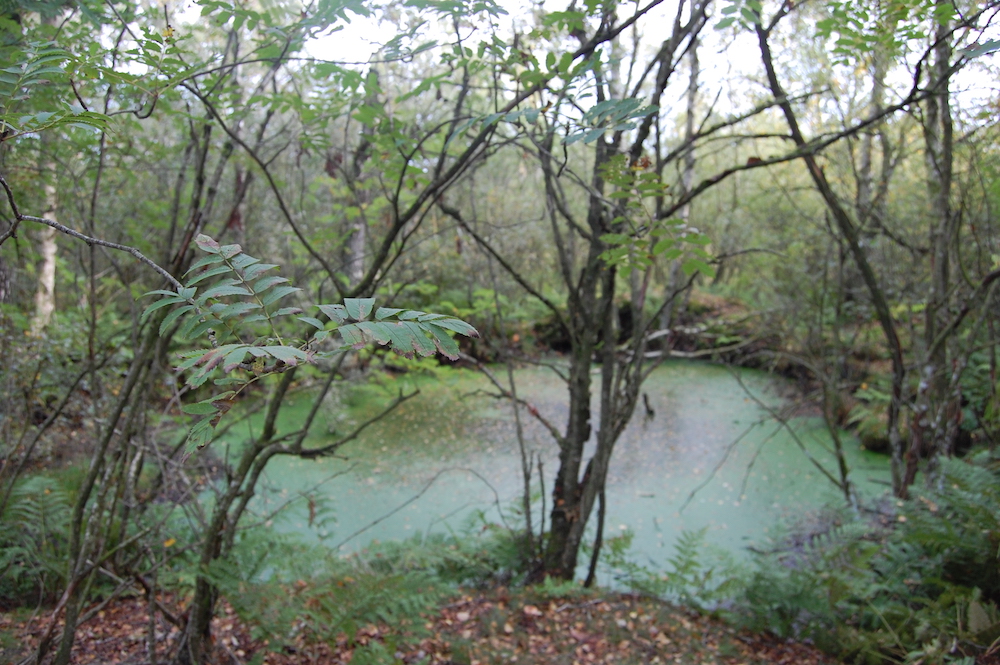Will Bog Archaeology Fade Away?

In the southernmost tip of Sweden, just over an hour from neighboring Denmark, is the ancient peat bog of Ageröd. For nearly a century, this waterlogged landscape has been revealing its secrets to archaeologists, including glimpses into the lives of the area’s inhabitants some 8,000 years ago.
But in September 2020, the bog led to a different kind of discovery. Adam Boethius, an archaeologist at Sweden’s Lund University, and his colleagues published a comparison of bones collected in Ageröd in recent years to those gathered in the 1940s and 1970s.
What they found, through a rigorous, first-of-its-kind study, confirmed a pattern that archaeologists in Europe had noticed for years: In comparison to bones excavated from similar sites in decades past, modern finds looked significantly more beaten and weathered.
A little deterioration may not sound surprising when working with millennia-old bones. But in peat bogs, the wet environment typically offers a nearly peerless level of preservation, which is how they can famously safeguard objects and human remains with minimal decay over millennia.
Boethius found that bones from the wettest areas had all but dissolved, prey to increasingly acidic conditions. Though plants fared slightly better, disturbances to the soil had begun catalyzing their decay as well.
If these trends continue, Boethius estimates that bones at the site may disappear within a few decades. The collagen they contain, key to conducting analyses of DNA and other chemical signatures, could be gone even sooner, by the mid-2030s, he thinks.
Something similar may be happening in peat bogs around the world. A range of threats, all traceable to human activities, are in the process of erasing peat bogs and all that’s within them. The threats are multifold: peat excavation and draining, rising acidity from greenhouse gas emissions, and more.
But the end result is the same. Everything the bog has preserved—from microscopic bits of pollen to entire human bodies—is likely disintegrating, soon to disappear.
“We don’t know what we will want to know in the future. That’s always the problem with archaeology,” Boethius says. “But if we lose the original record, then we know we cannot extract anything from them anymore.”
Though Northwestern Europe is renowned for its bogs, these landscapes are found in cool, damp climates the world over. Bogs, like swamps, fens, and marshes, are a kind of wetland. But bogs are kept wet only by precipitation, cut off from other water sources like underground springs or rivers. That isolation means the things that grow and die in bogs tend to remain.
Bogs host a startling diversity of plant and animal life uniquely adapted to the wet conditions, like the Sphagnum moss that dominates these ecosystems. When these living things die and decay, they become peat, which constitutes the majority of a bog’s soil and which can date back thousands of years. Peat, despite coming from a waterlogged environment, is a rich fuel source for fires, and humans have been cutting peat from bogs for centuries.
Still, “they are not immediately very attractive landscapes,” says Melanie Giles, an archaeologist at the University of Manchester. “I’ve fallen in one, and I was absolutely terrified because I went up to my waist. It felt like I was in a Sherlock Holmes story, and I was being swallowed by the Grimpen Mire,” the haunting bog described in English writer Sir Arthur Conan Doyle’s Hound of the Baskervilles.
But that superficial distastefulness conceals the true magic beneath the surface. Because they’re perpetually wet, bogs possess a unique set of properties that prevent the decay of what scientists call “organic” materials—matter from living things composed of carbon-based compounds.
In the open air, plant and animal tissues typically decay soon after an organism dies. This deterioration depends largely on oxygen, which can break down the chemical bonds in organic matter. In bogs, where oxygen filters in slowly, that process can be all but suspended.
“You need huge amounts of oxygen to break down organic matter,” says Richard Lindsay, the head of environmental and conservation research at the University of East London. In a bog, he explains, “you very quickly use up all the oxygen in the water. So, decomposition basically stops.”
Admittedly, in many bogs, high concentrations of Sphagnum will acidify the environment so that bones are quickly eaten away. But the same acidity helps preserve materials like skin and clothing in a process analogous to tanning.
As low-oxygen environments, bogs are natural time capsules. In some of the most ancient bogs, the bottom layers can be more than 10,000 years old. Within those layers can lie the remains of people, animals, and more. “All the organic side of life that we usually lose because things decay are preserved in the bog,” Giles says.
In Northwestern Europe’s bogs, archaeologists have found wooden statues and tubs, vats of preserved butter, and animal offerings from a wide swath of time periods going back thousands of years. Perhaps most significant to archaeologists are the hundreds of human remains discovered, some so well-kept they were initially assumed to be recent murder victims.
These “bog bodies” have turned up from Scandinavia to the U.K. They range in age from around 10,000 years to just decades old; each contains a wealth of information about the period they came from. Peat cutters or construction workers uncovered many of these remains accidentally. Because remains cannot be returned to bogs, nor have these bodies been claimed by descendants, archaeologists in Europe focus on respectfully conserving and, in some cases, displaying these bodies.
Looking at bog bodies, archaeologists have been able to study facets of life they’d otherwise have to imagine, like clothing or hairstyles. A woman who lived in the Iron Age in what is now Denmark, for example, was buried with a wool skirt and scarf, and two animal-skin capes. Another Iron Age body from Denmark, called Elling Woman by scholars, had her hair plaited in an elaborate braid.
A bog body unearthed in Ireland, dubbed Moydrum Man, had hundreds of sloe berries in his stomach. The bitter berries, the man’s final meal, may have been a punishment, Giles says, or perhaps an honorable offering in a time of starvation.
Also evident, sometimes painfully so, is the cause of death. Lindow Man, found in Northwest England and dating back 2,000 years, had been strangled and bludgeoned, and had his throat slit before being thrown into the bog’s dark waters. Researchers think he may have been a sacrifice.
“You’re talking about what happened over 12 hours” thousands of years ago, says Henry Chapman, an archaeologist at the University of Birmingham in the U.K. “You suddenly have this really strangely focused sense of time.”
Archaeologists who study the human remains and artifacts found in bogs have long faced a dilemma. It’s nearly impossible to find something in a bog just by looking at it. Most of the finds to date have come from peat digging operations or construction projects—destructive practices that also threaten bogs’ future.
Even the everyday work of archaeology can disturb this fragile ecosystem. “In general terms, the thing you want to avoid is change,” Chapman says. But today, our world is changing rapidly in multiple ways, from warming temperatures and disrupted weather patterns to the erasure of natural landscapes by human development.
Humans have drained 15 percent of peatlands—continued archaeological loss is almost certain.
Archaeologists often face a difficult choice: Save the bogs, and lose access to what’s in them, or excavate what they can before it’s gone. For many scholars, the best answer is to leave bogs alone. Not only are peatlands irreplaceable ecosystems in their own right, but their ability to preserve matter makes them excellent carbon sinks. Construction projects, peat cutting, and wetland draining to create farmland destroy bogs each year, releasing around 6 percent of the anthropogenic carbon dioxide emissions annually, according to the International Union for Conservation of Nature.
Trading archaeological finds for a chance at a cooler future is a worthwhile bargain, archaeologists say. Indeed, environmental changes linked to global warming as well as human encroachment and pollution are behind the increasing acidity in bogs that Boethius has discovered.
Unfortunately, much has already been lost, and bog destruction is on course to continue. The U.N. estimates people have already drained some 15 percent of the world’s peatlands, largely for agricultural use. The practice upends the bog’s fragile preservative conditions, leading the organic matter—including human remains—therein to decay rapidly. (In an ironic twist for archaeologists, a leading environmental solution to the loss of bogs—rewetting these areas—can also damage the materials preserved within.)
The continuing loss of archaeological heritage is almost a certainty, experts say, given how much material is hidden underground. “There’s a huge amount” left to find in bogs, Chapman says. “Any time any of these areas are looked at, we always find new things.” He characterizes peat bog archaeology as a race against time, pitting researchers against the forces of decay and environmental degradation.
New technology may offer hope for archaeologists. While it’s still difficult to search beneath the bog’s surface, Lindsay points to promising techniques such as ground-penetrating radar and electrical resistance surveys that help researchers look for promising sites to excavate. He hopes such tools and others will offer a better glimpse beneath the peat.
“We can create the most intricate images of what’s going on inside a living body,” Lindsay says. “I find it inconceivable that we would fail to be able to do the same in the relatively near future for peatland systems.”
Similarly, new approaches that identify and catalogue the chemistry of finds are allowing archaeologists to learn more than ever before about ancient diets, trade networks, and more. “The amount we can do with what’s left,” Chapman says, “is incredible.”




































